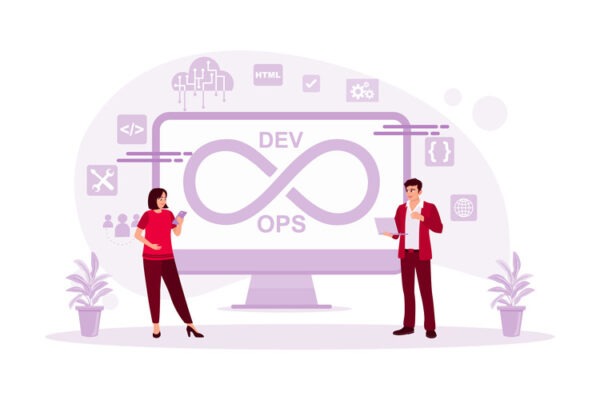Are you thinking about outsourcing but feeling uncertain? Imagine facing uncertainties about the future, worries about communication issues, and the ongoing fear of potentially compromising the quality you’ve worked hard to maintain. Recognising that your investment, which involves both time and money, requires thoughtful consideration and determining the ideal choice.
At Mallow, we’ve worked with countless companies as an outsourced software development partner. From this experience, and from hearing from clients’ experiences they’ve had elsewhere, we have a good sense as to what could go wrong. We want to provide confidence and clarity around potential challenges and help you avoid them in the first place.
By the end of this article, you will acquire practical insights to successfully navigate outsourcing challenges. Armed with a deep understanding of complexities, you’ll be able to make informed decisions on outsourcing for your business.
6 common challenges when outsourcing software development
Time zone differences and coordination issues

Outsourcing software development brings forth a critical consideration – the challenge of navigating time zone differences, impacting seamless project coordination. As businesses venture into global collaboration, they must confront the real problems arising from this disparity, including potential project delays, misaligned communication, and the added complexity of coordinating tasks across distributed teams.
Varying work hours and limited overlapping periods pose hurdles that demand strategic solutions for effective collaboration and project success in this dynamic outsourcing landscape.
We’ve found the best way to mitigate time zone challenges is:
-
- Create a well-thought-out schedule that accommodates time zone disparities, ensuring optimal overlap for collaboration.
-
- Employ advanced communication tools to facilitate effective real-time interaction, overcoming geographical and time zone constraints.
-
- Develop customised strategies for managing remote teams, especially in the context of diverse time zones.
-
- Foster a collaborative remote team culture, emphasising open communication and virtual team-building activities.
-
- Utilise video conferencing platforms to enhance face-to-face communication and strengthen team connections.
-
- Implement robust project management tools for streamlined workflows, task tracking, and efficient collaboration.
By actively cultivating a collaborative culture, investing in suitable communication tools, and strategizing scheduling, businesses can optimise outsourcing endeavours and ensure the success of their projects despite time zone challenges. Check out this article on how to handle timezone differences while working with an offshore application development team for more insights.
Quality assurance

Maintaining high quality standards is imperative for achieving successful project outcomes. Challenges often surface in preserving software quality during outsourcing, encompassing issues related to communication, collaboration, and adherence to established standards.
We’ve found some of the best ways to mitigate quality assurance are:
-
- Implement proactive testing procedures to identify and rectify potential issues before they impact the project while customising and establishing clear quality standards with the outsourced partner in alignment with customer expectations.
-
- Establish transparent communication channels to bridge gaps and ensure a seamless flow of information between the outsourcing team and the client.
-
- Foster a culture within the outsourced team that places a strong emphasis on quality, ensuring that every team member is aligned with the commitment to deliver high-quality outcomes.
-
- A powerful project management tool – JIRA, can be used to effectively manage and improve quality in custom software development through meticulous issue tracking, comprehensive test management, and seamless collaboration, ensuring the delivery of high-quality solutions.
-
- Conduct Unit testing on individual components to validate their correctness and identify any potential defects.
-
- Conduct Integration testing to verify that different components work together seamlessly as a unified system.
-
- Conduct Regression testing to ensure that new changes do not adversely affect existing functionalities by retesting the software after modifications.
By strategically addressing quality assurance concerns through these methodologies and leveraging appropriate testing tools, businesses can significantly enhance the success of their outsourced software development projects. For further insights into navigating quality testing methodologies, check out this article on what quality testing methods should you consider for your application.
Security risks

When considering outsourcing for software development, prioritising security is paramount, especially in the vendor selection process. Faced with potential security threats, businesses must vigilantly safeguard sensitive data.
We’ve found following these steps helps mitigate security risks:
-
- Implement encryption protocols, secure communication channels, and access controls.
-
- Ensure vendors comply with data protection standards such as GDPR, HIPAA, or ISO 27001.
-
- Evaluate potential vendors’ security protocols comprehensively via thorough Assessment
-
- Examine vendors’ past security track record and incidents.
-
- Scrutinise vendors’ dedication to robust security practices beyond technical capabilities.
By incorporating these measures and steps into the vendor selection process, businesses can establish a secure foundation for successful and risk-mitigated outsourcing partnerships that align with industry standards and effectively safeguard sensitive data.
Technical expertise gap

The technical expertise gap in outsourcing often happens because service providers are slow to adopt advanced technologies, leading to a mismatch with what clients need. For example, a company looking for AI solutions might face a gap if the outsourcing partner isn’t up-to-date with the latest developments in artificial intelligence.
Mitigating the technical expertise gap requires:
-
- Focus on recruiting individuals with a proven track record of adapting to changing project needs.
-
- Ensure that the outsourced partner is adequately trained, open to ongoing training, and proficient in adapting efficiently and effectively to dynamic environmental changes.
-
- Prioritise outsourcing partners with a deep understanding of specific industries, ensuring alignment with industry regulations and requirements.
-
- Conduct regular skill assessments within the outsourcing team to identify gaps and tailor training initiatives accordingly.
By integrating these strategies and necessities, companies can proactively tackle the technical expertise gap in outsourced software development projects, fostering adaptability, and ensuring a more precise response to evolving technological requirements.
Cost and budget control

In outsourcing, organisations face the central challenge of cost control. Achieving equilibrium requires strategic decisions on resource allocation, vendor selection, and technology investments.
The best way we’ve found to overcome cost & budget control issues are:
-
- Develop a detailed financial plan, including accurate project requirement estimations, to form a solid foundation for budget control.
-
- Implement monitoring mechanisms to track expenditures in real-time, ensuring strict adherence to the allocated budget.
-
- Embrace agile financial practices to adapt to changing project dynamics, enhancing resilience against unforeseen challenges.
-
- Establish clear communication channels and reporting structures to provide stakeholders with real-time insights into project expenditures, fostering trust and facilitating informed decision-making.
-
- Proactively conduct regular financial reviews to identify potential issues early on and implement corrective measures.
-
- Develop robust contingency plans to address unexpected challenges and mitigate their impact on the budget.
-
- Adopt flexible budget allocation strategies to adjust financial plans based on evolving project requirements.
By incorporating these strategies and leveraging the tools mentioned, organisations can effectively navigate the intricacies of cost and budget control in outsourced software development, ensuring financial prudence and successful project outcomes.
Challenges in project ownership
Handling project ownership in outsourced software projects poses significant challenges, particularly in defining responsibilities and ensuring a streamlined delivery process.
To overcome these hurdles, you can implement the following strategies:
-
- At the project’s outset, establish clear guidelines for roles, responsibilities, and expectations to minimise ambiguity and ensure that everyone involved understands their specific contributions, fostering a sense of ownership.
-
- Allocate time and effort for comprehensive scope definition and requirement gathering during the project initiation phase.
-
- This creates a solid foundation, reducing uncertainties as the project progresses and providing a reference point for ownership delineation.
-
- Create a collaborative environment by involving stakeholders at various stages of the project’s lifecycle.
-
- Encourage their active participation in decision-making processes, creating a shared ownership mindset and improving communication and coordination.
-
- Select outsourcing partners based on their track record, communication practices, and commitment to collaborative project management.
-
- Ensuring alignment with project ownership expectations is crucial for a successful partnership.
-
- Implement regular project audits to assess progress, identify challenges, and make necessary adjustments.
-
- This proactive approach ensures that the project stays on track, meets desired outcomes, and minimizes ownership uncertainties.
By integrating these strategies, organisations can effectively address and overcome challenges associated with project ownership in the context of outsourced software projects. Clear communication, careful partner selection, and periodic assessments contribute to a smoother project management experience, fostering successful outcomes.
How can you choose the right application development team?
By now, you’ve learned about the main challenges in outsourcing software development and ways to deal with them. With these strategies, you can now make smart decisions, ensuring success and using outsourcing to help your business grow in the ever-changing world of software development.
The next crucial step involves selecting the right application development team, ensuring they have the necessary expertise, align with project goals, and facilitate seamless communication. This positions your business for growth, leveraging the benefits of outsourcing while minimising potential challenges.
Check out this article on choosing the right application development team: a step-by-step guide. to get more insights. This article serves as a guide, providing insights into crucial considerations before making your selection, optimising budgets, and minimising unnecessary spending.
It equips you with the knowledge to recruit an exceptional application development team. It walks you through determining project requirements, researching teams, conducting discovery calls, and finalising contracts to ensure you secure a reliable development team for your application journey.
Still, trying to figure out how to proceed further with the Outsourcing software development? Feel free to reach out to our team.
Author
Kamalavel Rajendran
Kamal is the CEO of Mallow Technologies, a visionary leader with a mission to harness the potential of technology for tackling a variety of business challenges. He established the company with the objective of delivering tailored software solutions that address the wide array of issues encountered by businesses. He firmly believes that technology, empowers businesses to make informed decisions and promotes growth from every angle. In his leisure time, Kamal exhibits a remarkable passion for the game of tennis, immersing himself fully in the game. Furthermore, beyond the confines of the tennis court, his unwavering enthusiasm for innovation is apparent as he stays at the forefront of the latest developments in the realms of both business and technology. His dedication to merging the worlds of business and technology positions him as a dynamic presence in the industry, continually seeking inventive solutions to propel companies towards new horizons.



